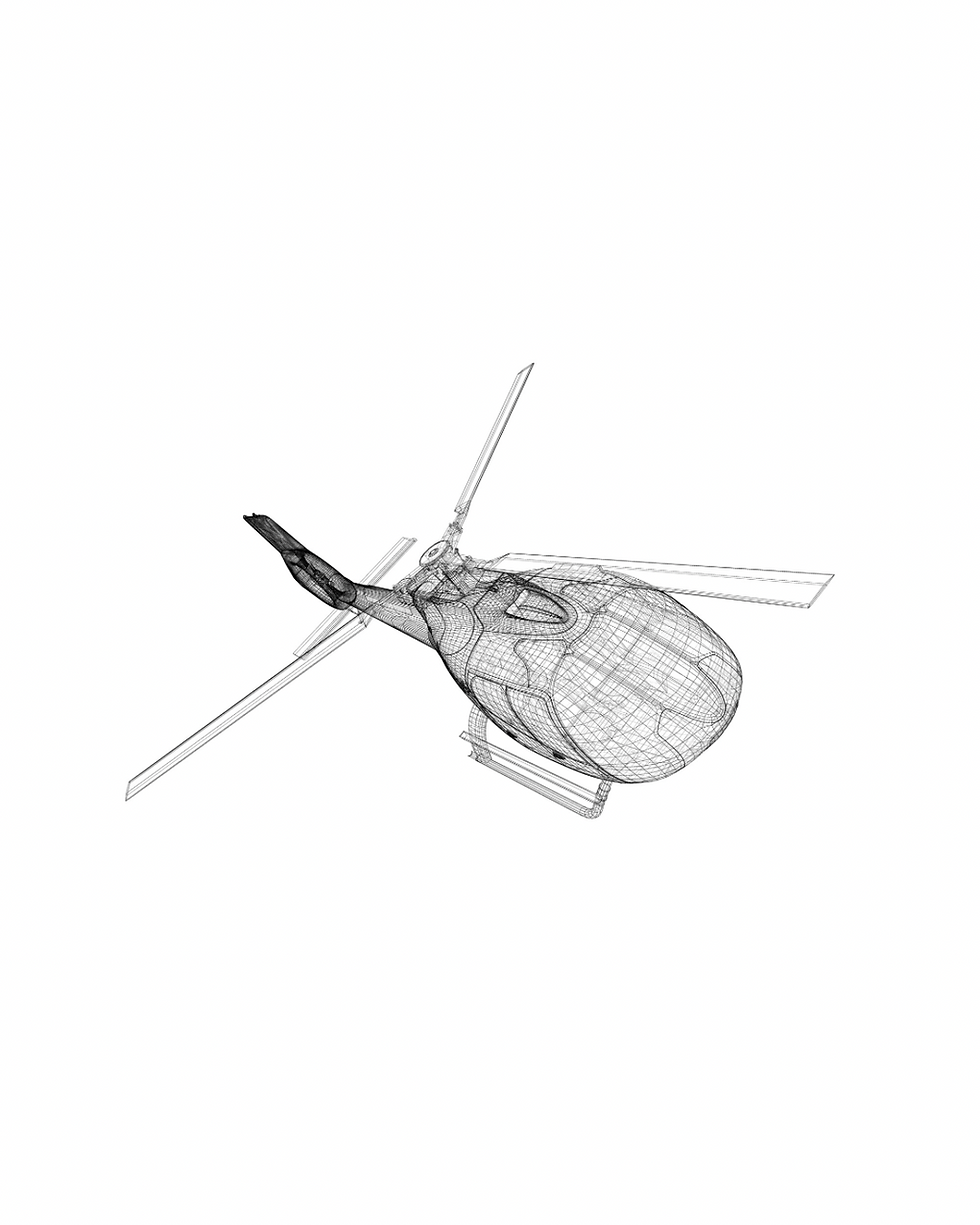Helicopter Noise and Environmental Impact
- Captain James
- Jun 19, 2023
- 2 min read
Helicopters are versatile aerial vehicles that serve critical roles in various industries. However, their operations are often accompanied by concerns regarding noise emissions and environmental impact.
We will explore the topic of helicopter noise, delve into its environmental implications, and highlight the ongoing efforts to address these concerns.
Understanding Helicopter Noise
Helicopters inherently generate more noise compared to fixed-wing aircraft due to their unique design and flight characteristics. The rotor system, engine, and tail rotor contribute to the primary sources of helicopter noise. The complex aerodynamics involved in rotor blade rotation and the interaction with the air result in considerable noise levels.
Impact of Helicopter Noise
Community Disturbance
Helicopter noise can have a significant impact on communities residing near flight paths or heliports. The persistent noise can cause annoyance, disrupt daily activities, and potentially affect the overall well-being and quality of life for residents.
Wildlife Disruption
The noise generated by helicopters can also disrupt wildlife habitats, particularly in environmentally sensitive areas. The disturbance can interrupt natural behavior, breeding patterns, and communication among wildlife, thereby impacting the ecological balance.
Regulations and Mitigation Measures
Recognizing the concerns associated with helicopter noise, regulatory bodies and industry stakeholders have implemented various strategies to mitigate noise emissions and address environmental impact.
Noise Certification Standards
Helicopter manufacturers must comply with stringent noise certification standards set by aviation authorities like the International Civil Aviation Organization (ICAO) and the Federal Aviation Administration (FAA). These standards ensure that helicopters meet specific noise limits during various phases of flight.
Technological Advancements
Significant progress has been made in developing quieter helicopters through technological innovations and design enhancements. Manufacturers are investing in advanced rotor systems, sound-absorbing materials, and engine technologies that reduce noise emissions. Active noise control systems are also being explored to actively counteract undesirable noise frequencies.
Operational Procedures
Helicopter operators adopt operational procedures to mitigate noise impact. They carefully select flight paths that minimize overflight of noise-sensitive areas, optimize climb profiles to reduce noise during takeoff, and employ noise abatement procedures during landing approaches.
Noise Monitoring and Reporting
Airports, heliports, and aviation authorities employ noise monitoring systems to measure and analyze helicopter noise levels. This data is utilized to evaluate compliance with noise regulations, identify potential noise hotspots, and implement targeted mitigation strategies.
Collaboration and Public Engagement
The collaboration between communities, aviation authorities, helicopter operators, and manufacturers is crucial in addressing helicopter noise concerns. Public engagement initiatives, such as community forums and consultations, enable stakeholders to voice their concerns and collectively develop noise abatement plans that balance aviation needs with community well-being.
Future Directions
The commitment to mitigating helicopter noise and reducing environmental impact remains a continuous effort. Ongoing research and development focus on noise reduction technologies, operational improvements, and exploring alternative propulsion systems, such as electric or hybrid-electric helicopters. These advancements hold the potential for significant noise reduction and a reduced ecological footprint.
Conclusion
Helicopter noise and its environmental impact are important considerations for the aviation industry. Through adherence to noise certification standards, technological advancements, operational procedures, and collaborative efforts, the industry strives to strike a balance between the benefits of helicopter transportation and minimizing its effects on communities and the environment.
By prioritizing noise reduction measures and responsible operations, we can create a harmonious coexistence between helicopters and their surroundings.






Comments